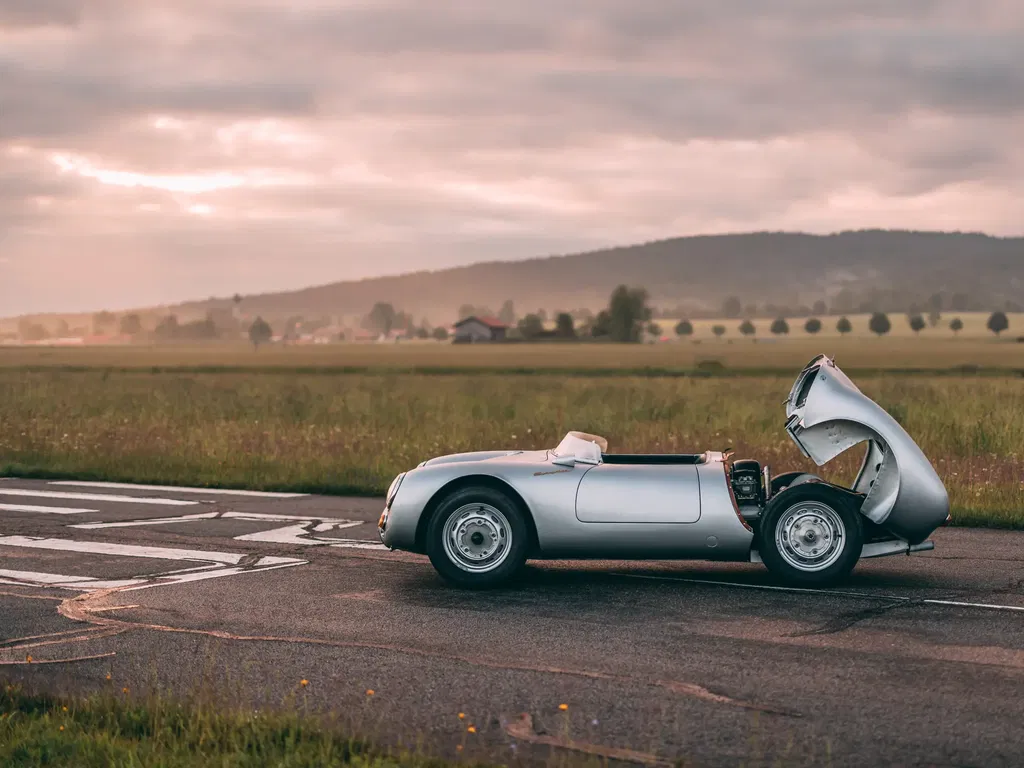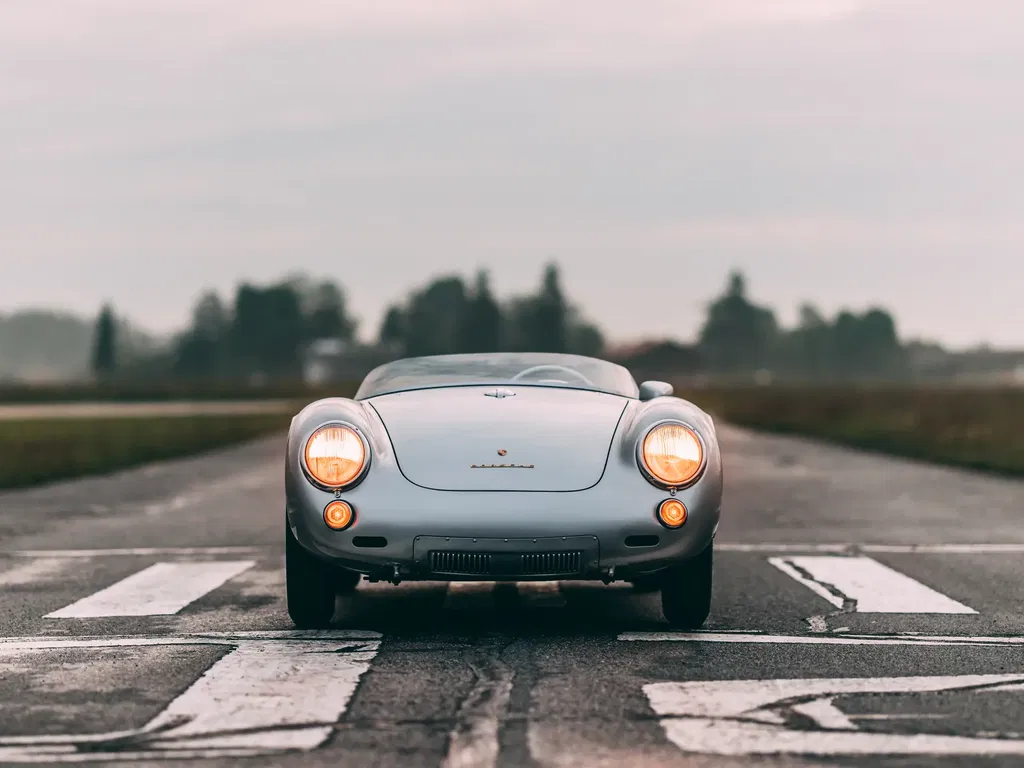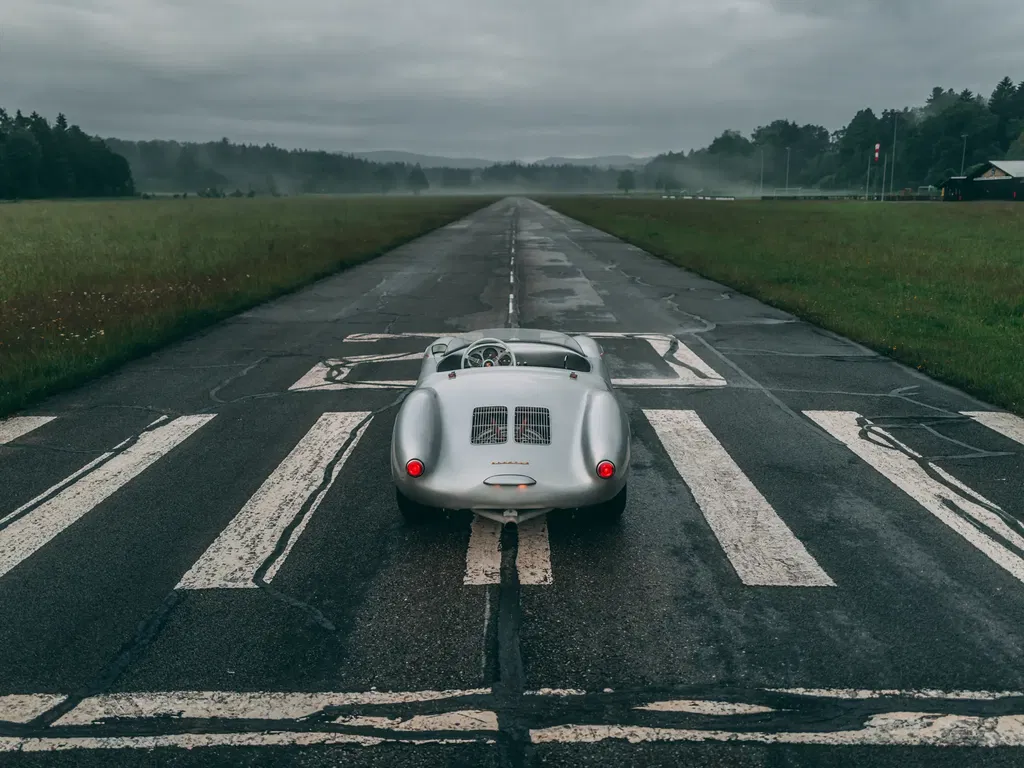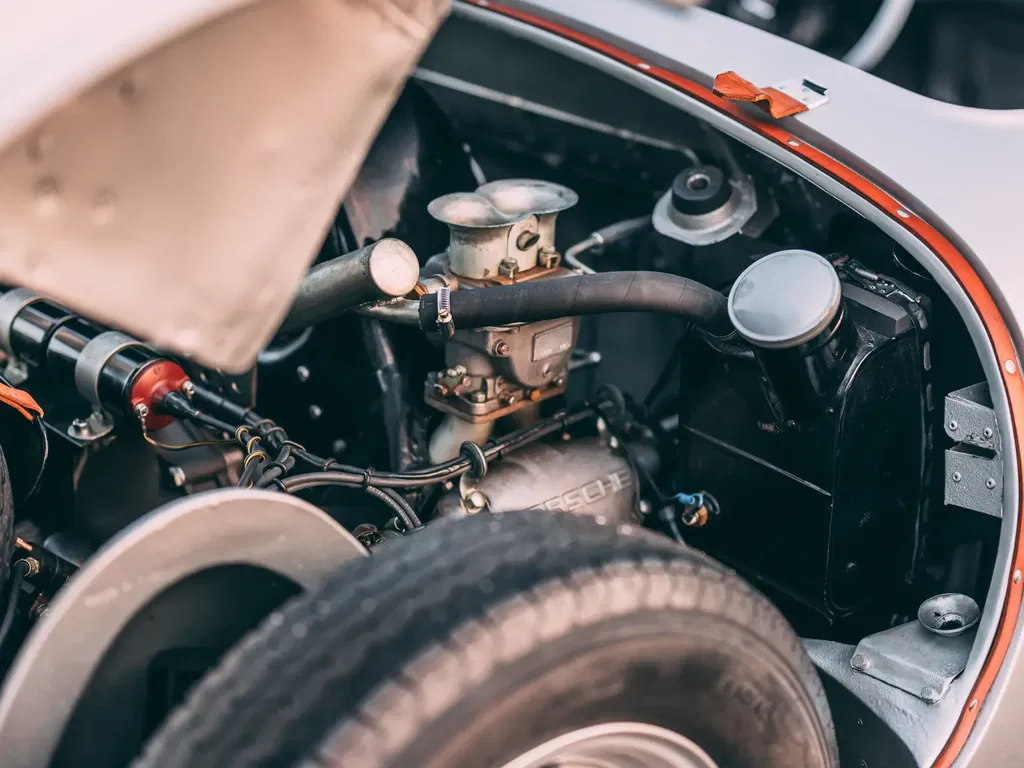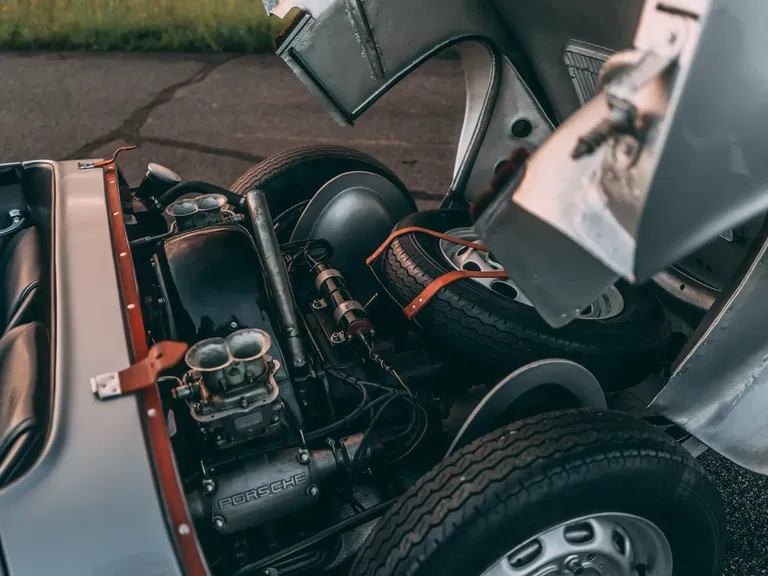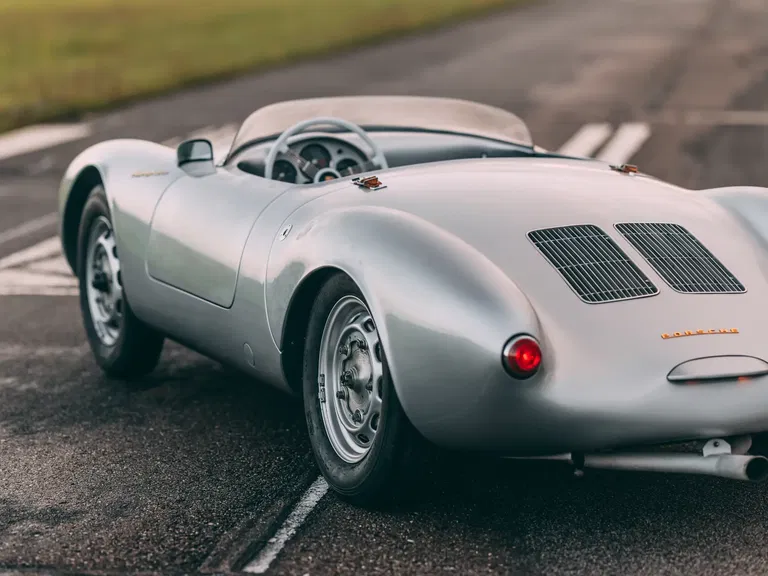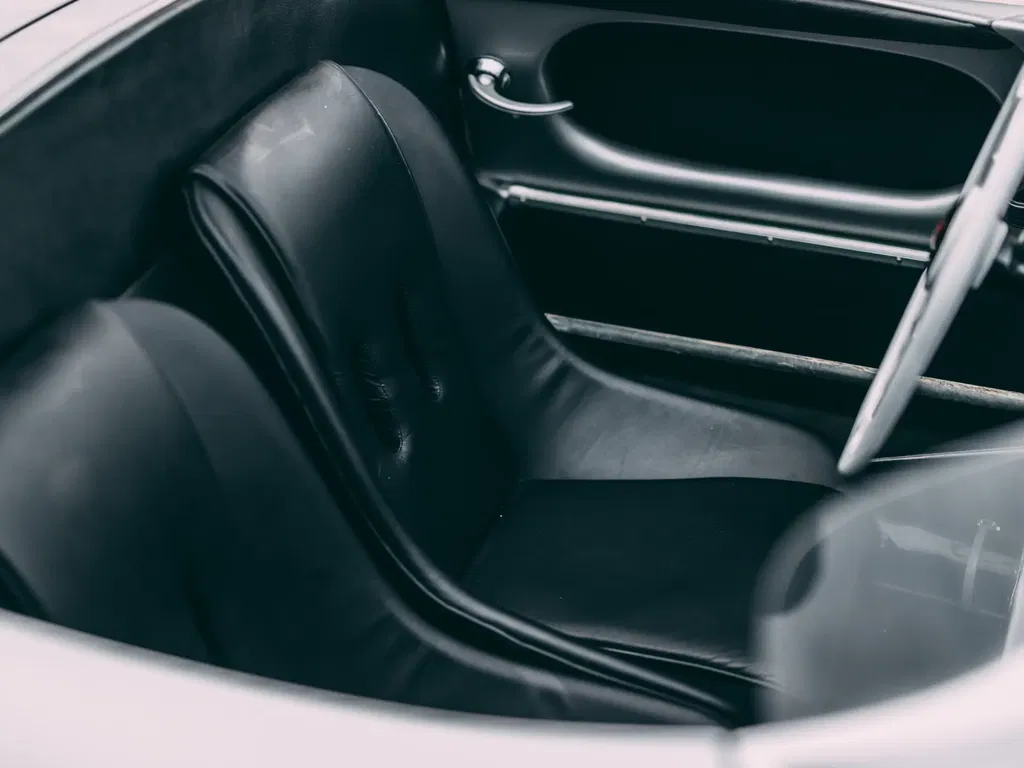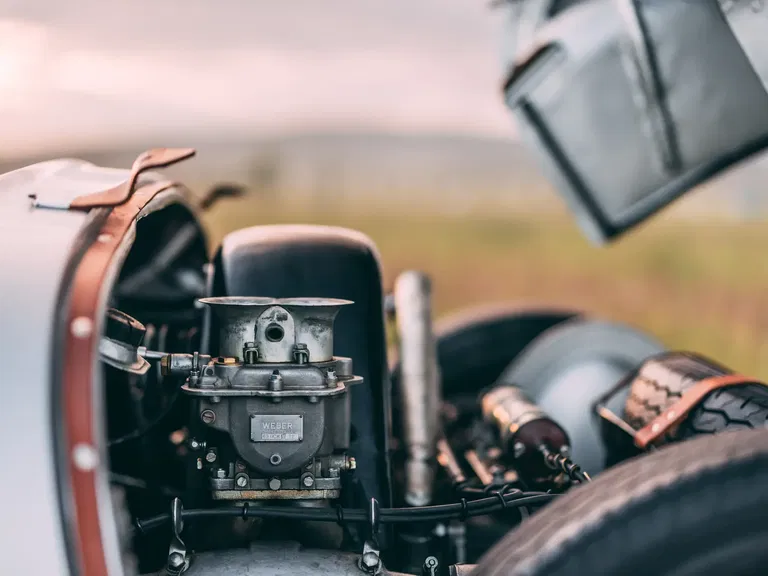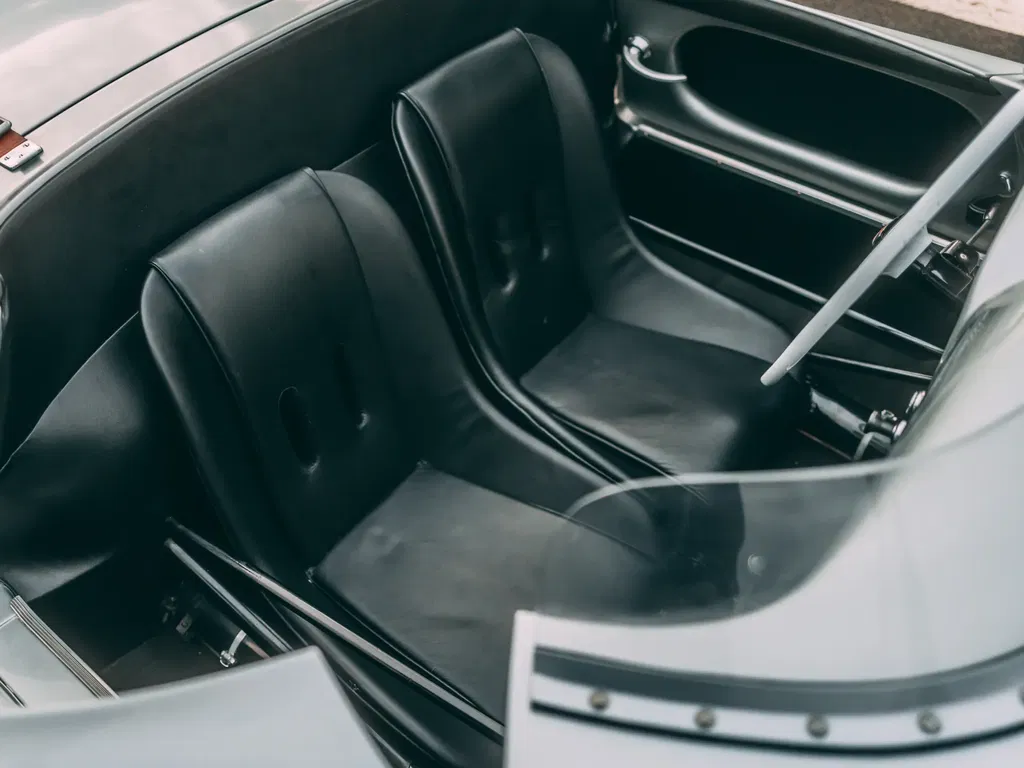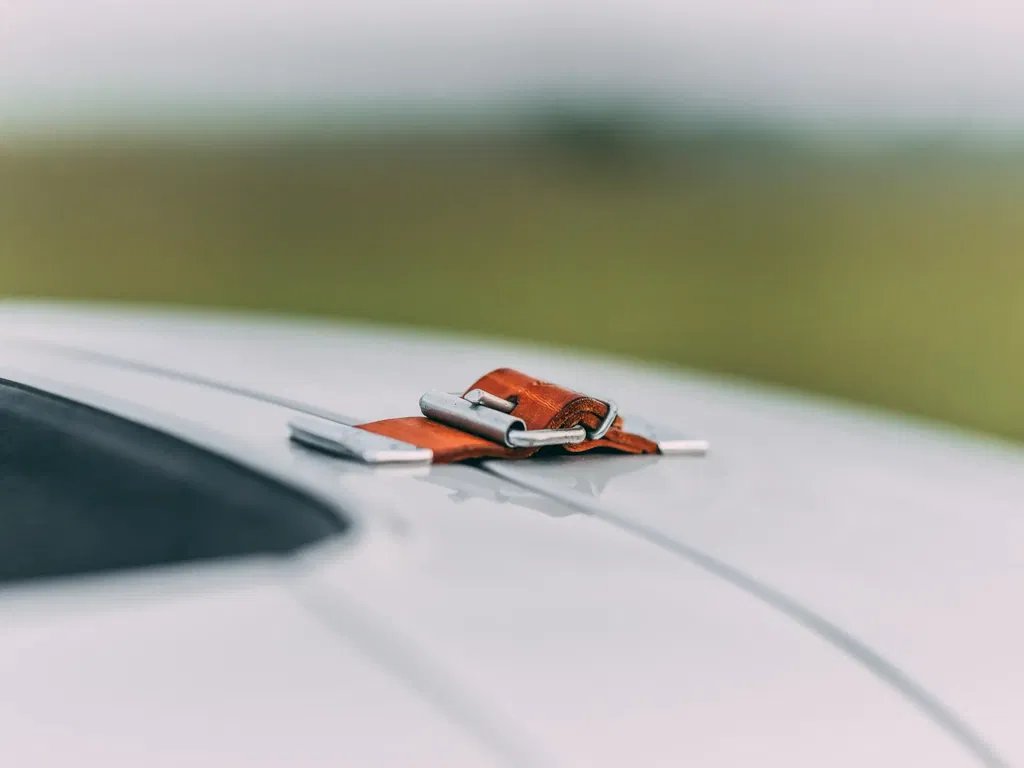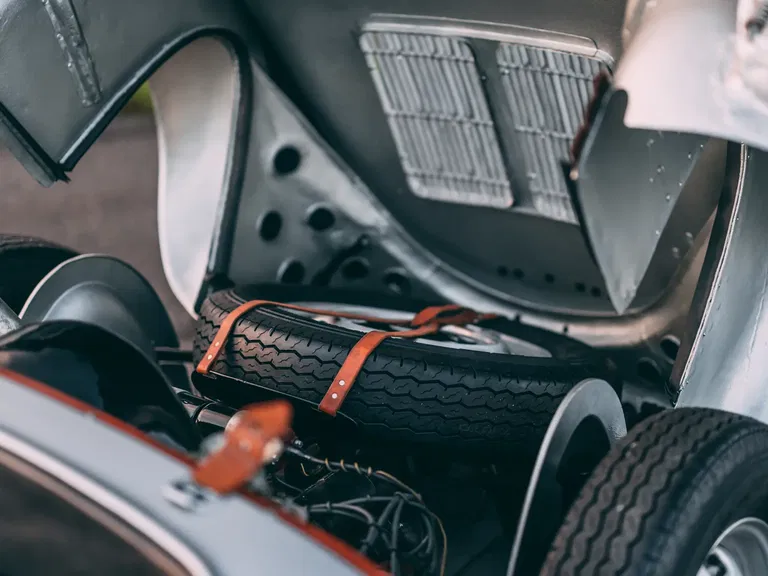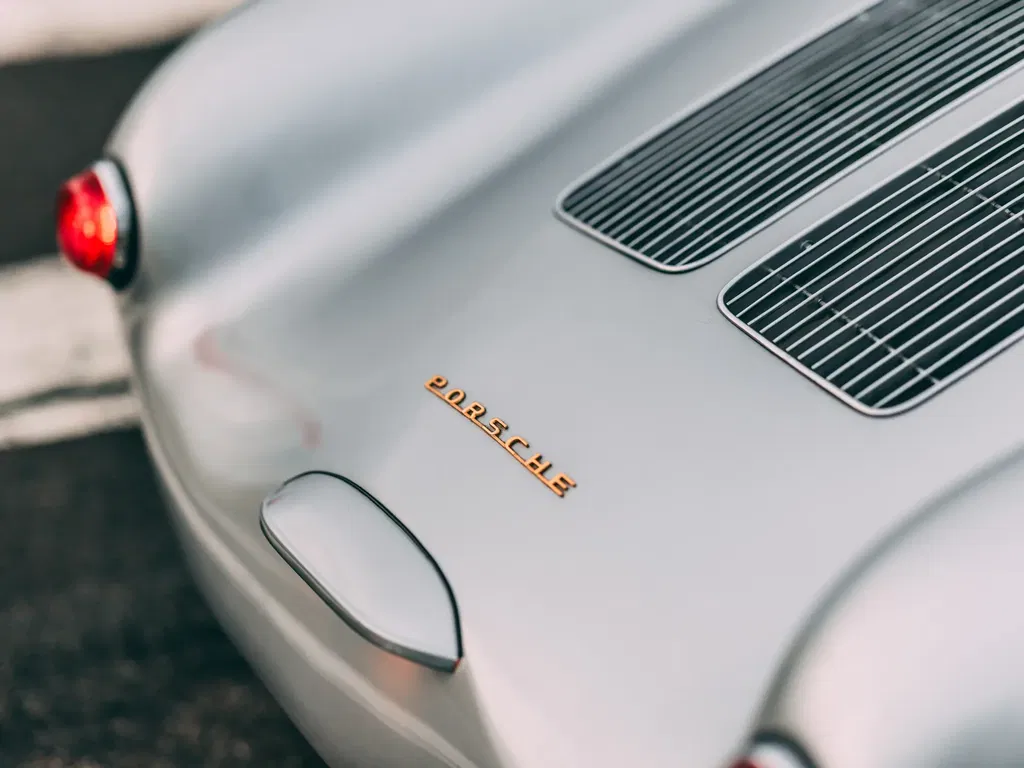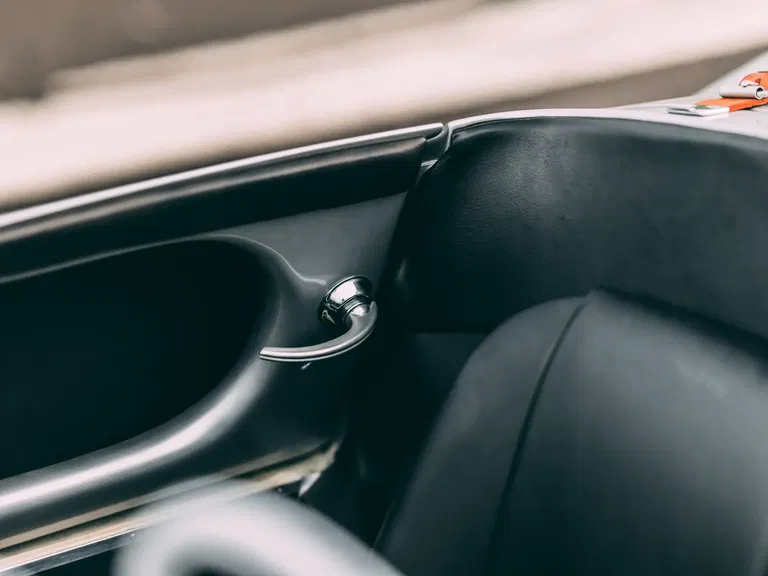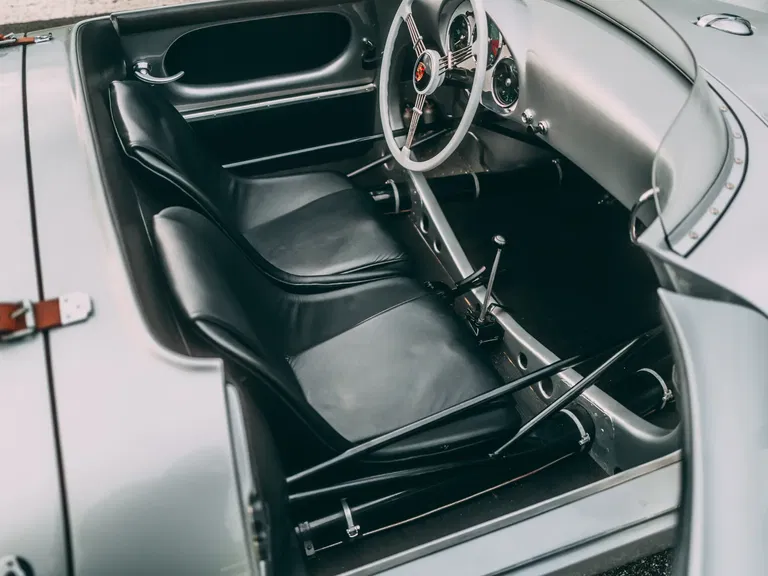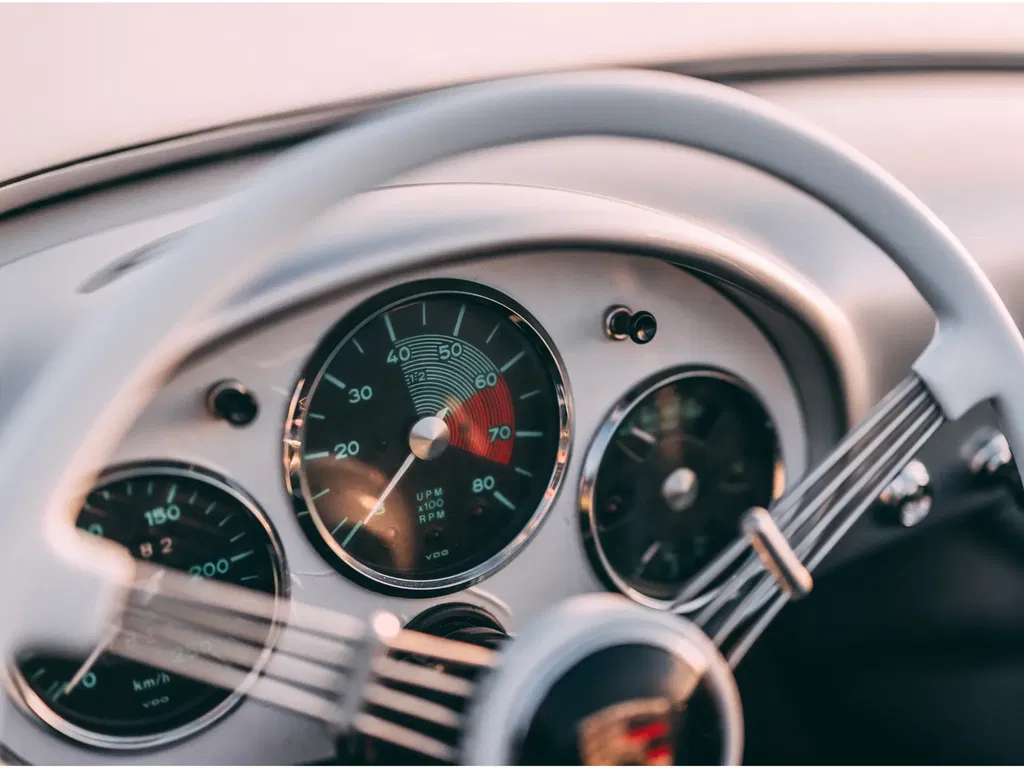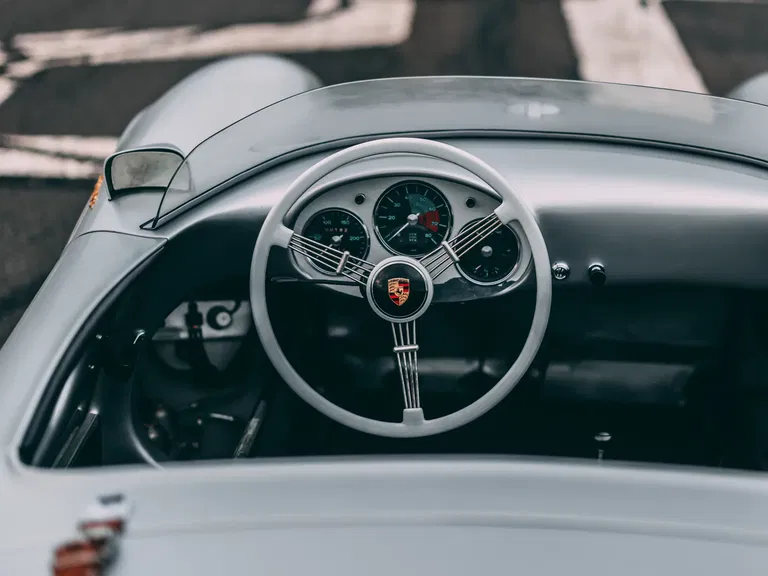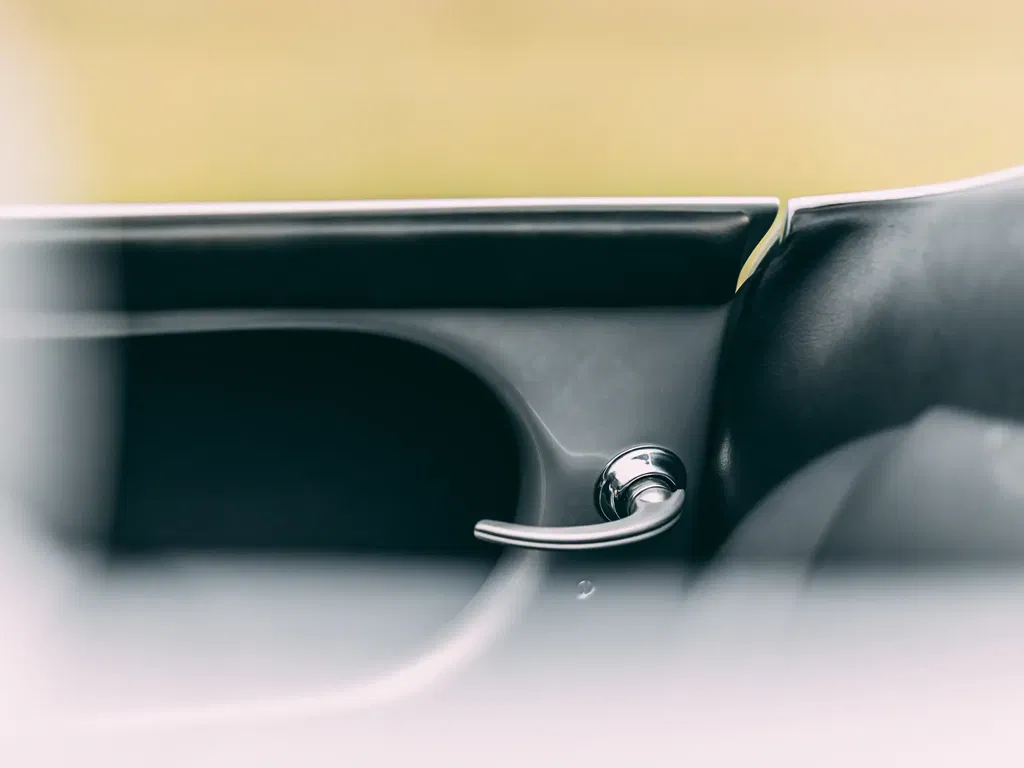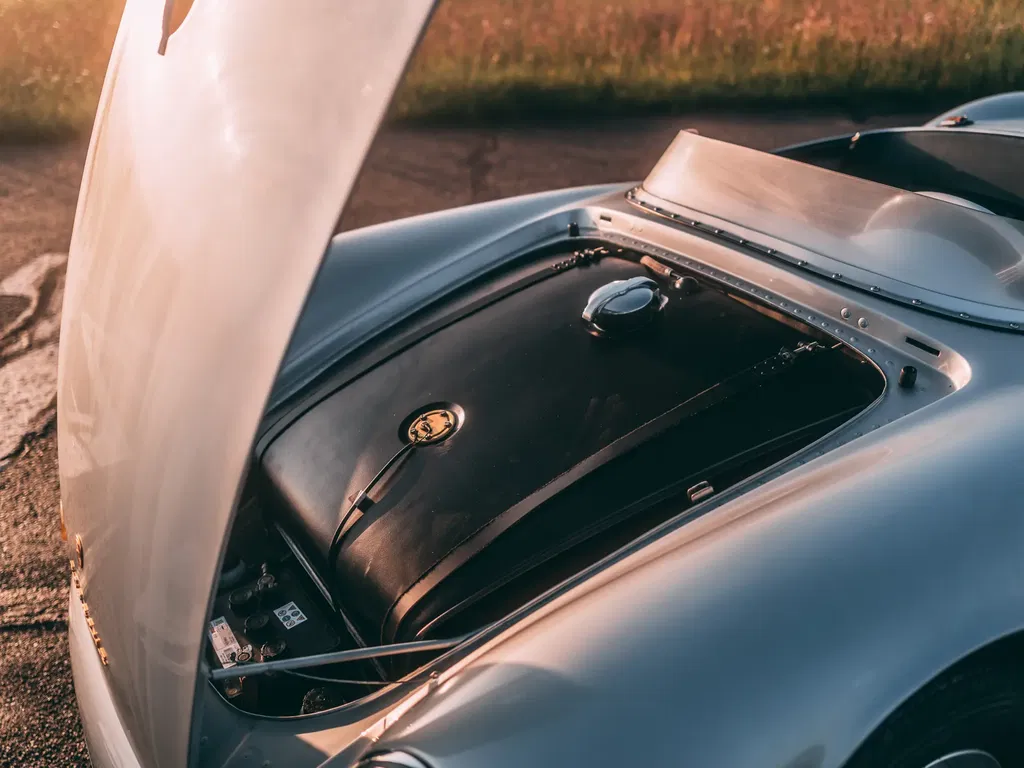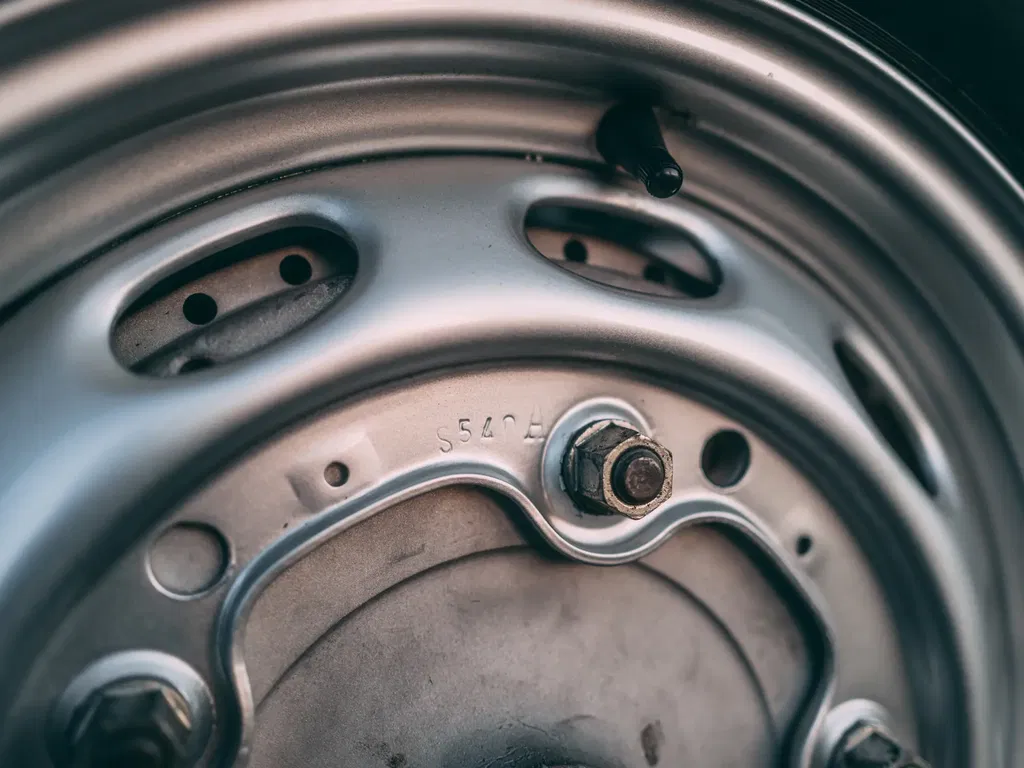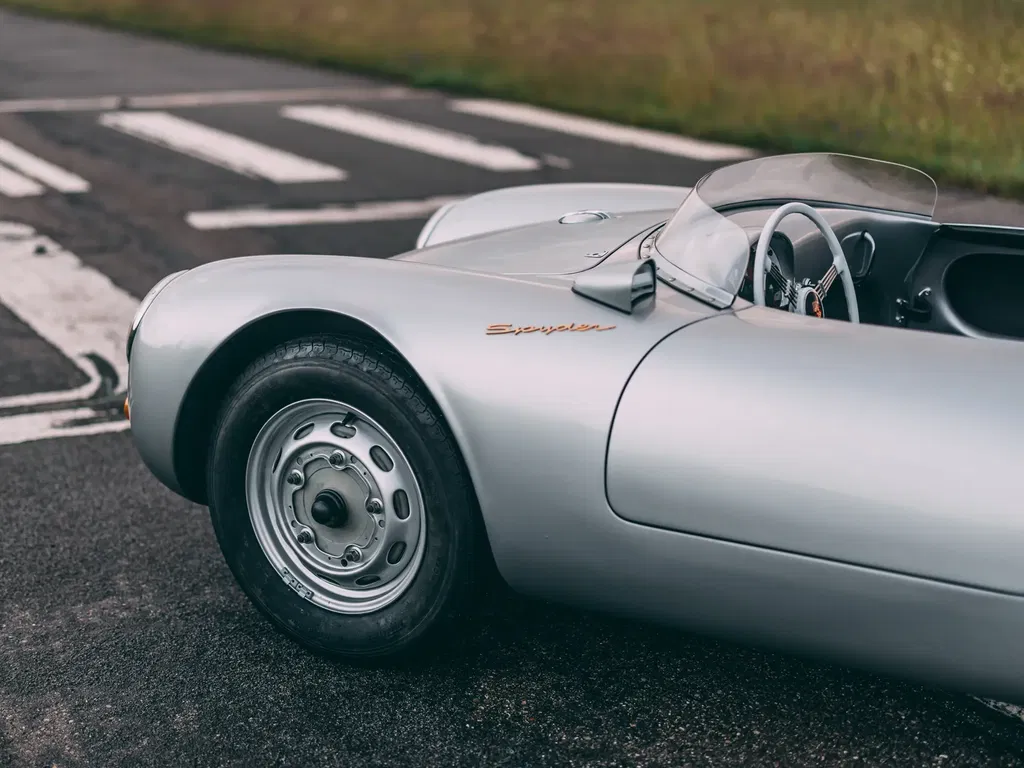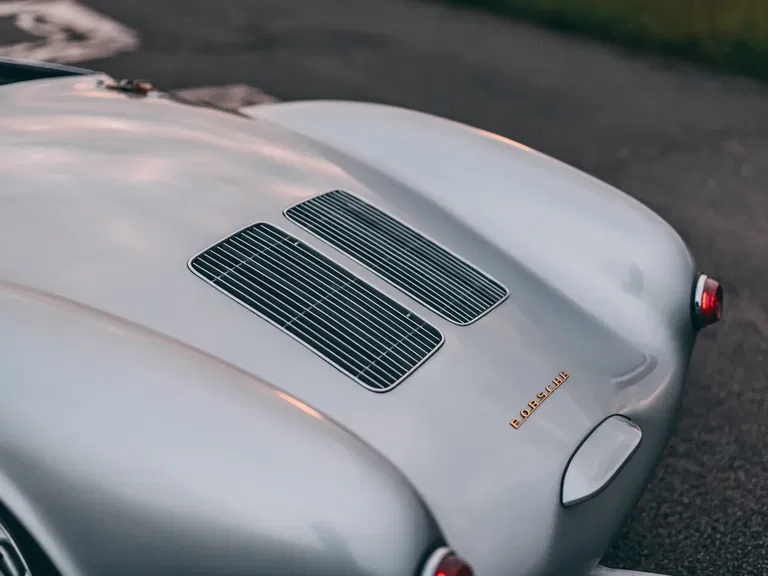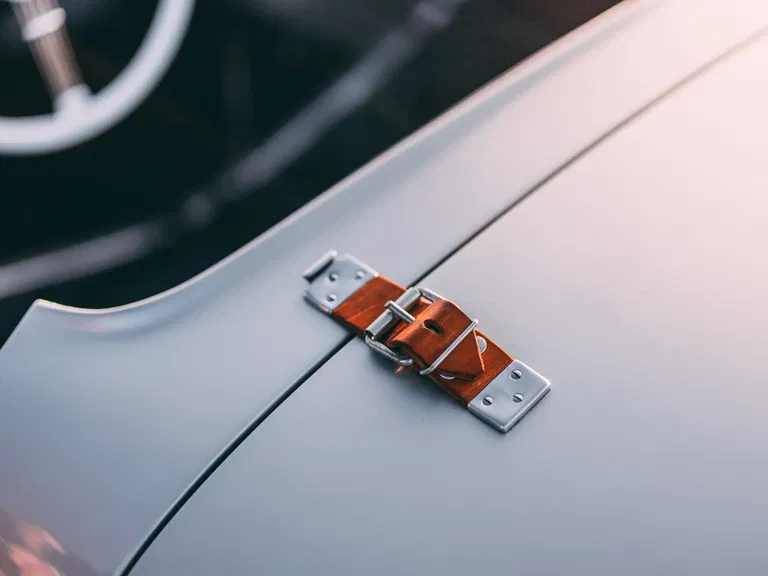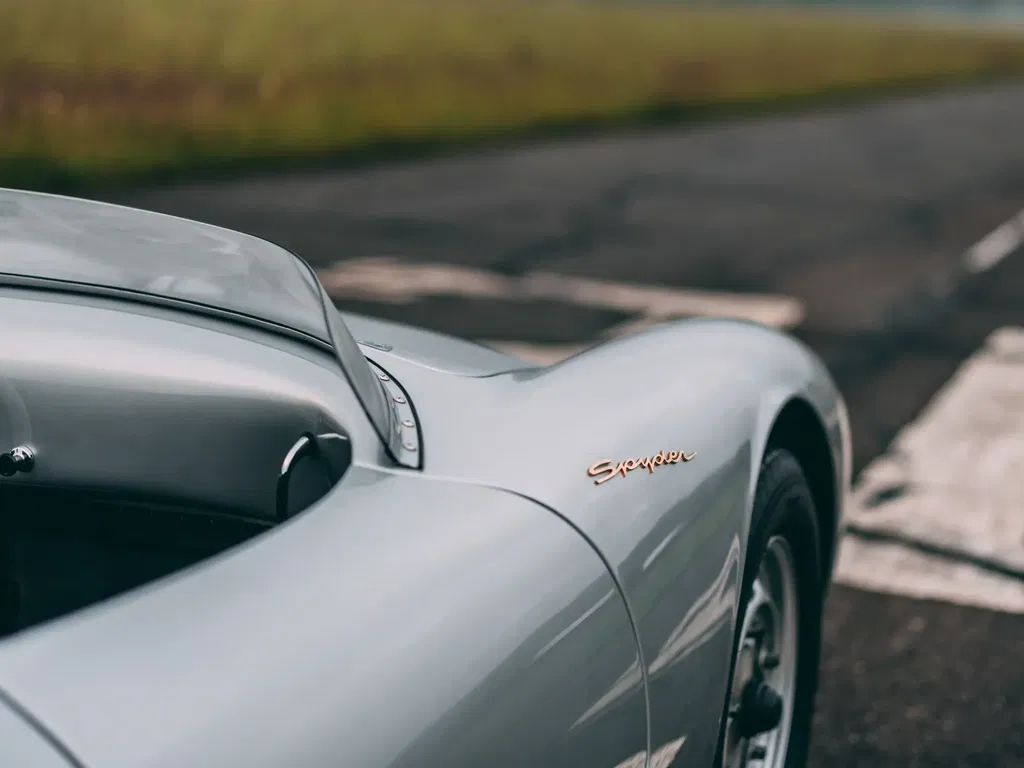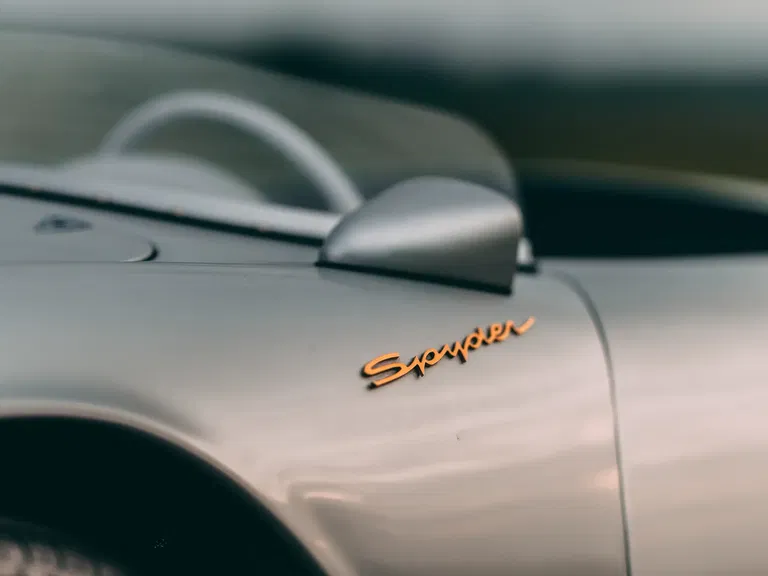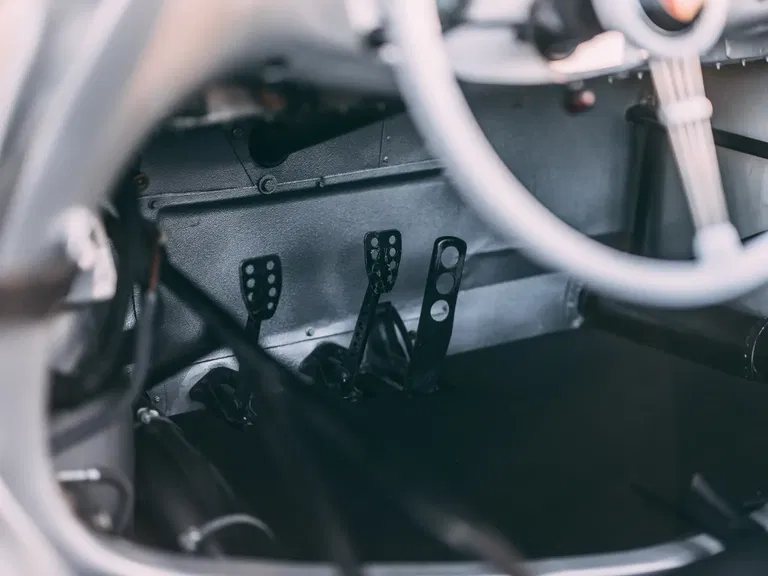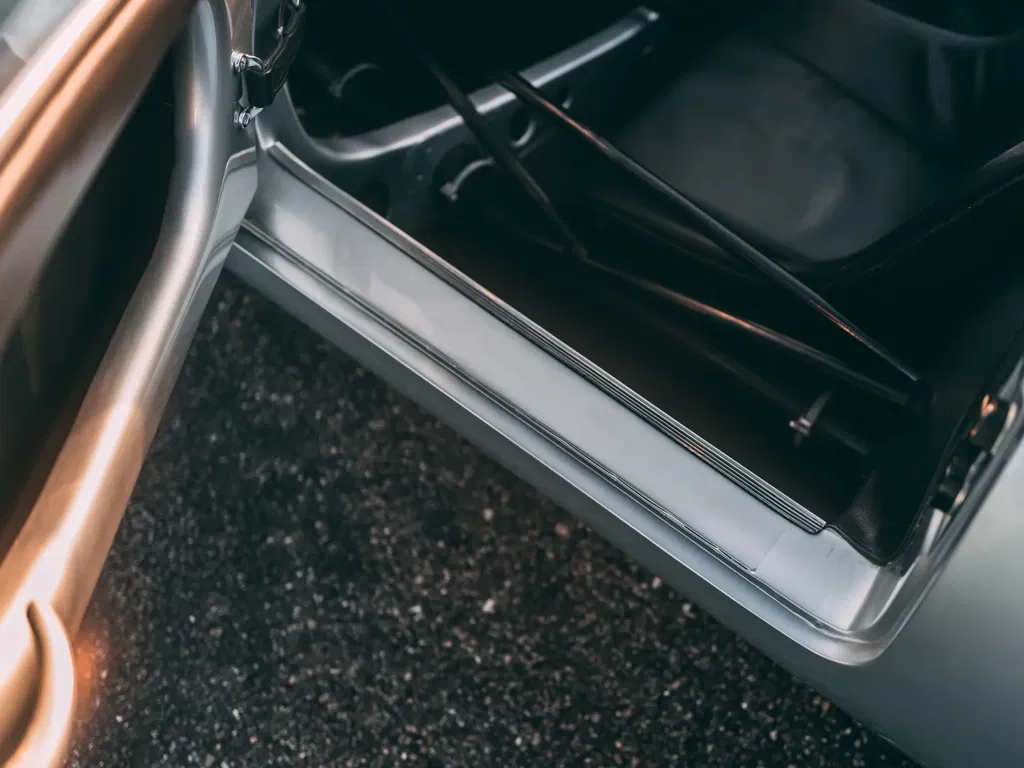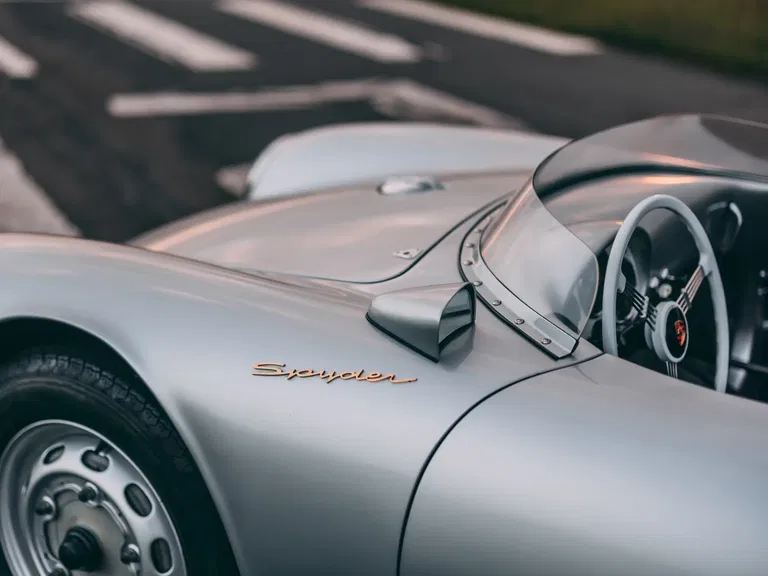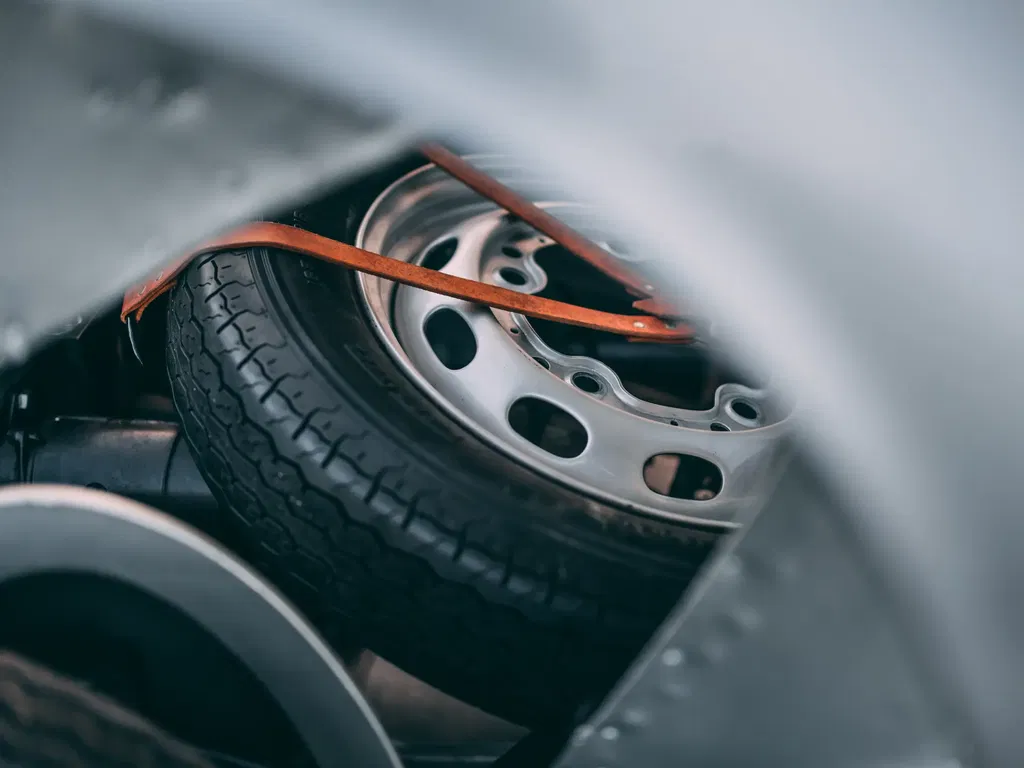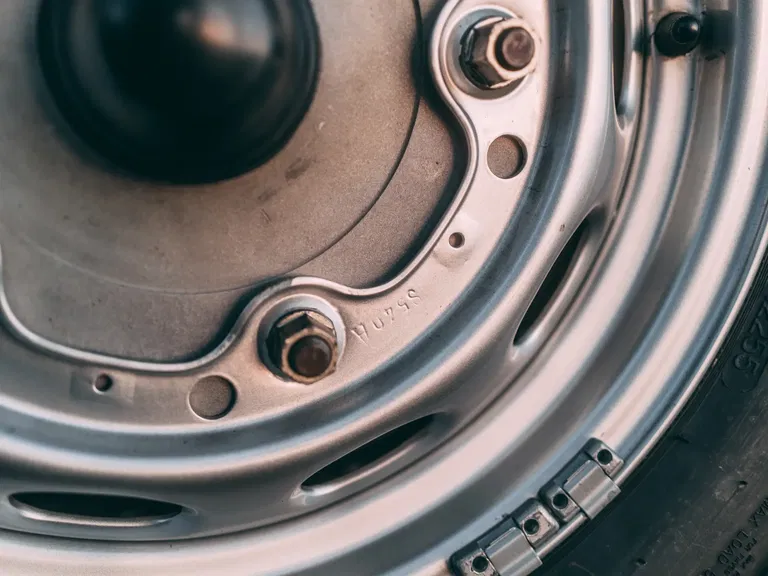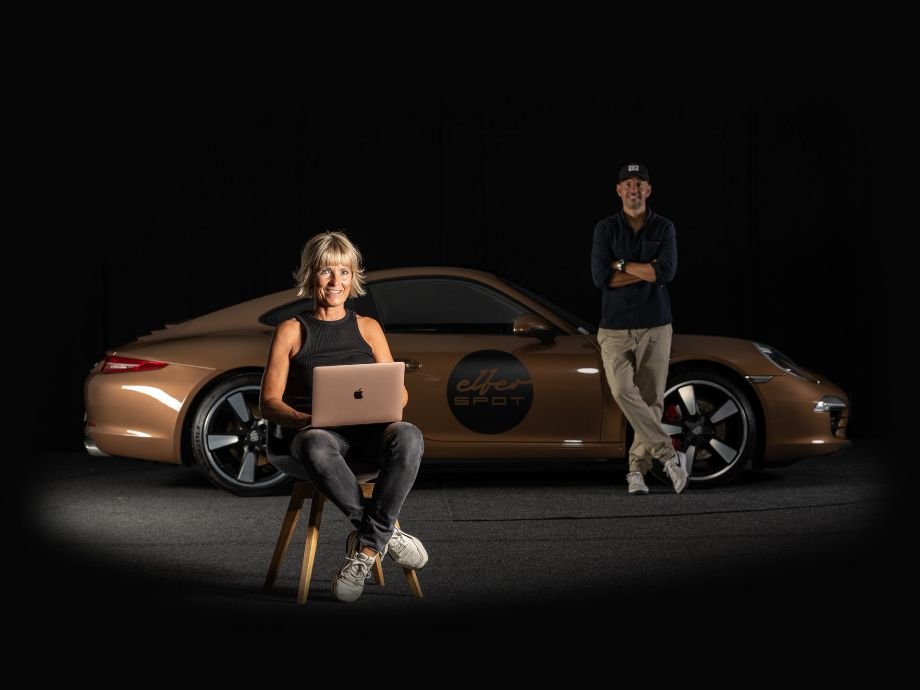Recognised as the first Porsche designed from the ground up to be a racecar, the 550 Spyder contested the most revered motorsport events of the 1950s. On the entry lists of the Targa Florio, Mille Miglia, 24 Hours of Le Mans, and Carrera Panamericana, the diminutive mid-engined sportscar achieved astonishing results against larger-capacity rivals from Ferrari and Maserati.
The late racing driver Herbert Linge, who held the distinction of being the first mechanic employed by Porsche upon its factory moving to Stuttgart, wonderfully kept a handwritten record of the 90 examples built of the model, so called because of its remarkably low 550-kilogram weight. According to his notes, chassis 0038 was completed on 29 April 1955 equipped with engine P 90031 (internal number 41) and gearbox 10029.
Finished by the factory in white with burgundy accents, it was one of two cars destined for Portugal. There, it was first owned by Fernando Mascarenhas, who campaigned the 550 Spyder in a variety of European circuit races. The car is believed to have scored class podiums on its first two competitive outings at Barajas and Monsanto in 1955 before participating in the Nürburgring 500 Kilometres that August, where it is understood that its race was cut short due to an accident.
This 550 Spyder was then sold to Cypriano Flores in 1958, and further entered into other national races. After his death, chassis 0038 was taken over by his son, Caeser Flores. He sought a restoration in Portugal in the 1980s but struggled to find the right company to sympathetically handle the dry sump, 1,498-cc flat-four Carrera engine and alloy body. He eventually returned the car to Porsche for a complete overhaul, with the mechanical work carried out at Zuffenhausen while original coachbuilder Wendler attended to the exterior.
Critically, this example retains its matching-numbers engine, four-speed gearbox, and seamless mild steel chassis. The bulkhead, dashboard, and rear clamshell appear to have remained throughout, likewise for the underfloor that still features the correct drainage holes and caps to direct water away from the compact, open, two-seater cockpit. It should be noted that during the 1992 to 1994 restoration, Wendler seems to have used modern pop-up rivets at the front and on the floor. The colour was also changed to silver, the beige vinyl interior switched to black leather, and other technical alterations made.
The car has not been driven since the restoration. Similarly, the dual-overhead camshaft, 110 horsepower, Type 547/1 engine has allegedly not turned over since July 2010 owing to the crankshaft ostensibly retaining its original roller bearing specification. As such, it is recommended that a full service is undertaken before use.
Thereafter, by virtue of retaining its matching-numbers engine and gearbox, chassis 0038 would make for a truly outstanding candidate for any significant Porsche collection and at discerning Concours d’Elegance events.


